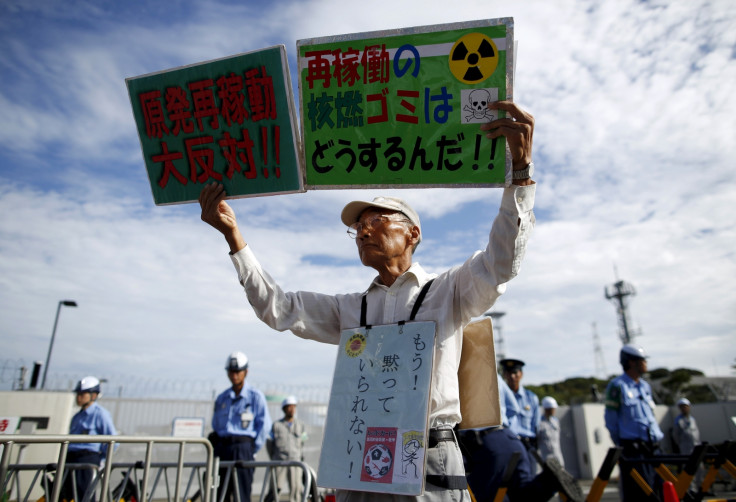Japan restarts first nuclear power plant after nationwide shutdown following Fukushima meltdown
Japan fired its first nuclear reactor on Tuesday (11 August) the first one to be reactivated under a new set of stricter regulations following the triple-reactor meltdown at the Fukushima plant.
The country has been nuclear free for about two years after all its commercial nuclear plants went offline in September 2013, South China Morning Post reports.
All commercial nuclear plants were taken offline by September 2013 after a series of meltdowns at the Fukushima Daiichi plant which was triggered by a massive earthquake and tsunami in 2011.
Japan Times said Reactor 1 at the Kyushu Electric Power Co.'s Sendai complex in Satsumasendai in the Kagoshima Prefecture, about 1,000km southwest of Tokyo, became the first unit to be reactivated at 10.30am local time. The plant was taken offline in May 2011 for mandatory regular checks.
The newspaper said the reactor is expected to reach criticality in half a day and start generating and transmitting electricity in three days.
Sendai's plant reactor 2 is expected to go online in October, it added. The newspaper said the successful restart is a major boost to Prime Minister Shinzo Abe who has been arguing that nuclear power is necessary for lowering electricity prices and boosting the economy.
The government is now seeking to accelerate the reactivation of 42 other commercial reactors that remain offline following the Fukushima incident.
Japan Times said power companies are also desperate to bring their nuclear plants online as they have been forced to turn to alternative and more expensive means to generate electricity while their nuclear plants lay idle.
Kansai Electric Power Co.'s Takahama plant received safety clearance from the Nuclear Regulation Authority in February but a court in April banned the company from switching on the two reactors, citing safety concerns.
The newspaper noted that prospects for the other reactors remain unclear as the new safety review process undertaken by the regulator is taking much longer than expected, with only five reactors so far having been given the green light.
Public against restarting nuclear plants

Despite the Japanese government claiming that the new regulations are "the world's toughest", there are strong public opposition to restarting the power plants, given the radioactive water leakage continuing at the Fukushima plant as it undergoes decommissioning.
A Kyodo News poll last month show that nearly six out of 10 people oppose reactor restarts despite the hike in electricity bills.
Around 400 protesters stood in front of the Senai plant on Monday (10 August). "I cannot stand they are resuming the reactor when the Fukushima nuclear accident remains far from being solved," one demonstrator told a local television station.
The paper said that some areas near the Fukushima plant still remain uninhabitable and more than 110,000 people are still living as evacuees in and outside the prefecture.
South China Morning Post said last month the central government had notified Naraha, a Fukushima town that it will lift the evacuation order that has been in place since 2011, which would allow 7,400 people to return home permanently. They will be the first evacuees allowed to return home. Following the Fukushima incident, seven municipalities saw their entire population evacuated.
Data indicate that household electricity bills rose by 25.2% over the four years through March while factories and companies saw their bills surge by 38.2% during the same period.
The government plans to have nuclear power accounting for 20-22% of total electricity supplied in Japan by 2020, compared with the roughly 30% before the Fukushima meltdown.
© Copyright IBTimes 2025. All rights reserved.






















